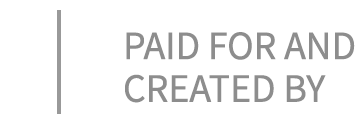Qualifying Donors
How higher-ed fundraisers can focus their attention and increase donations

At one point in her fundraising career, Cynthia Cashman was working so hard that high blood pressure landed her in the hospital. She was chief development officer for the University of Minnesota’s College of Food, Agricultural and Natural Resource Sciences (CFANS) at the time. She had a staff to manage and a caseload of around 300 individual donors and organizations to work. The team was consistent, bringing in $10 million to $12 million per year, but “we were burning out pretty quick,” she recalls. Change was necessary, and she knew things were improving when the late poet e.e. cummings played a small role in landing a major gift.
At Cashman’s urging, the CFANS dean brought in Veritus Group, which trains and coaches nonprofits on building relationships with donors that leads to transformational major gifts and overall major gift program growth. Diana Frazier worked with Cashman and her staff on Veritus Group’s donor qualification process, which is designed to reduce caseloads and increase fundraising by identifying donors who want and need engagement. Frazier’s guidance was what prompted Amy, an apprentice gift officer, to make the connection between an NPR story about cummings that she heard one morning and an elusive donor who only used lower-case letters in her emails. “I heard this and thought of you,” Amy wrote when she sent the link.
“The donor was just tickled,” Cashman recalls. Amy’s small gesture opened the door to a closer relationship, and the donor gave $3 million over the next few years. “Those little things can add up to big gifts. You just have to pay attention to the details.”
That has not changed amid the widespread closures and event cancellations related to the coronavirus pandemic. In fact, building and maintaining relationships is even more important in times of crisis. Many major donors are elderly, and may be especially vulnerable to both the virus and the volatility of the stock market. If you want to know how they’re doing, you can ask. You should ask.
“There’s this mystique in fundraising that gift officers are supposed to figure it all out through research,” says Frazier, who worked in fundraising for 32 years before joining Veritus Group as Senior Client Experience Leader.
But, she adds, that’s only feasible with a realistic caseload. At some institutions, gift officers are expected to pursue ever more leads. In other cases, donor capacity to give drives gift officers’ efforts, with little regard if the person is a current donor or the donors’ interests. Neither strategy is efficient or sustainable. Veritus Group believes that after total dollars raised and donor retention, the most important metric for evaluating gift officers’ work is the number of meaningful connections made.

“Meaningful” is subjective, of course, and will vary from donor to donor. Amy’s thoughtful email is one example. Letters, phone calls and meetings can be meaningful too. Often, the content of an exchange is not nearly as important as the interaction itself. Building a relationship, on the donor’s terms, is what matters. As Richard Perry, Veritus Group founding partner, puts it: “Giving is never about money. And donor relations shouldn’t be about money. Money is a result, not the objective.”
Veritus Group recommends a caseload of 150 qualified donors per gift officer, with each donor ranked and grouped according to a few objective metrics and some subjective criteria. This is sorted out in the qualification process, which can take months but results in more efficient, effective and enjoyable work.
In the qualification process, gift officers review the entire donor pool and rank them according to:
Recency: The best major donor candidates for a caseload pool will have given in the past 12 months — preferably in the past three to six months.
Gift amount: This is the primary indicator. Gift recency and amount are the best indicators that the donor is inclined to keep giving in the future.
Capacity: An effective way to determine capacity is via a wealth overlay, an in-depth examination of all public giving information. Capacity is a subjective measure, and only suggests donor motivations.
Relationship: If someone in the organization knows the donor, that person may be able to provide input to consider in adding this donor to a donor pool. This is the most subjective data, but often more valuable than numbers.

In a downloadable white paper titled Qualifying Donors for Major Gift Caseloads, Veritus Group outlines the process of whittling the donor pool into manageable caseloads of donors with demonstrated interest in engagement. This is the reason for the entire effort. Not all past and possible future donors want to be contacted by gift officers; Veritus Group estimates that in any given donor pool, at least two-thirds would prefer to be left alone. By identifying the one-third that does want a personal connection and ranking those people according to capacity and inclination data, gift officers can focus their efforts where they are most likely to have an impact.
“It was surprising to see how much we were missing,” says Cashman of working through the qualifying process at the University of Minnesota. “One donor told me, ‘I’m a cheap date.’ He planned to keep giving and didn’t need us to keep asking. So, I took him off my list.”
“It also got them thinking about all the things they could ask donors to support, beyond scholarships,” adds Frazier. "When gift officers have time to learn about donors’ passions, they’re better able to steer them toward opportunities they might not otherwise consider. Even donors who are already in multi-year plans will sometimes give even more, she says, for projects or programs that closely align with their values."
“Learn about the donors,” Frazier says, “don’t make decisions for them.” (Another Veritus Group white paper, Packaging Budget & Program into Donor Offers, has more on this.)
“It took some time to change how we were doing things,” Cashman admits. But the results were dramatic: “Eighteen months later, we had a record-breaking year, $21 million. It really is all about building those relationships.”
And maintaining them — even if a donor has to suspend giving due to the economic effects of the coronavirus response. Do not abandon the relationship. Veritus Group Senior Partner Jeff Schreifels recalls working with an MGO in 2009 who saw some donors’ gifts plummet from high six to low five figures, because of the recession. “But the MGO stayed in touch with them,” Schreifels says. “And when they recovered, they made a point of telling her that because she never gave up on them, they wanted to give even more than before.”
“I’ve been working with nonprofits for more than four decades,” adds Perry, “and I’ve seen many natural disasters and economic downturns over that time. The organizations that didn’t panic, that kept working their plans, always weathered the storm and came out stronger.”
Veritus Group has more coronavirus crisis advice on its web site.



